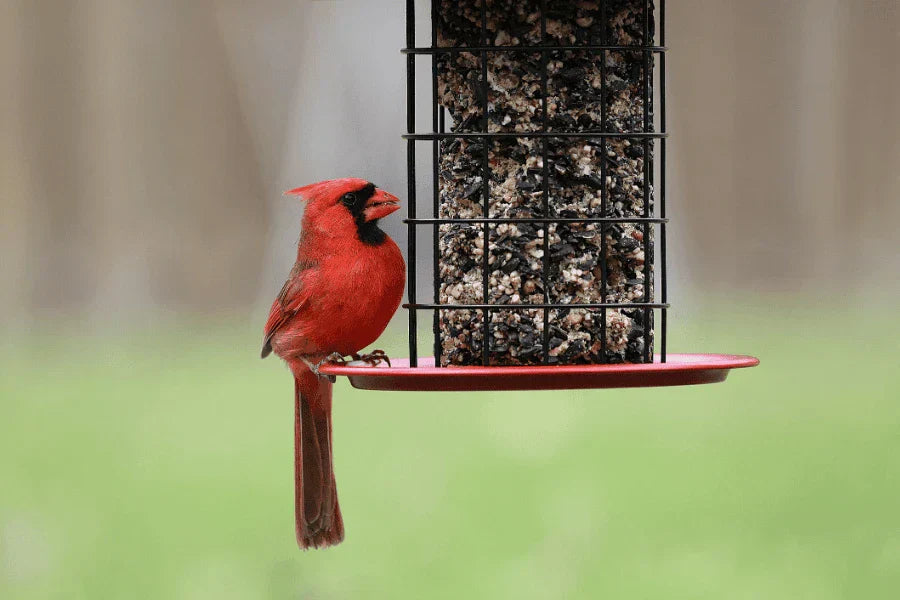What Birds Never Migrate? Understanding The Adaptations Of Non-Migratory Species
Migration is one of the most miraculous phenomena you can observe in nature, when millions of birds travel thousands of miles to cross continents. Nevertheless, not all birds embark on this annual journey. Others remain sedentary year-round and rely solely on the habitats within reach.

But what turns some birds into nonmigratory ones, and how do these birds survive without the long journeys? This article focuses on an exciting topic: non-migratory birds and their ways of living, location, and peculiarities of existence.
What Are Non-Migratory Birds?
These are birds that do not migrate over long distances or are not migratory in the strict sense of the term. These are also known as resident birds.
In contrast to migratory birds, these birds do not move from one area to the other but stay in their environment throughout the year. There are several reasons for these reactions, including genetic preprogramming, weather patterns, and the availability of resources.
Why Do Some Birds Never Migrate?
The determination of whether to be migratory or not migratory is dependent on various ecological and biological factors. Such birds can adapt to their surroundings, so they don't require migrating to survive. Here are some key reasons why certain birds choose to stay put:
· Stable Food Sources:
Birds that rely on food availability in their locality have a lower chance of migrating. For instance, birds that can obtain their food, such as seeds or fruits, in the relevant seasons do not need to make migrations in search of food.
· Mild Climate:
Some birds living in relatively temperate or moderate conditions cannot experience extreme cold winter conditions or cold winters that force them to migrate. These birds do not have to migrate to warmer places or areas because they can tolerate the local climate.
· Adaptations:
They are of stationary habits, and hence, they have physical and behavioral characteristics that enable them to endure the change of season. These are called phenotypic plasticities and may involve coloration, fat accumulation, and metabolism modifications.
Famous Non-Migratory Birds
Here are a few examples and reasons why these birds are non-migratory:
1. Northern Cardinal:
The Northern Cardinal stays resident throughout the year in North America owing to the availability of food and the stability of its area. The bird eats mainly seeds, fruits, and insects, which are available all year round; it also has strong territorial behavior to guarantee access to these resources and nesting sites.

2. House Sparrow:
House Sparrow colonies can be effortlessly observed in surroundings that offer a constant supply of scraps and other anthropogenic structures. This means they are in a better position to milk these urban resources, thus eradicating the usual pressures that push birds to migrate due to inadequate food.

3. European Robin:
European Robins do not always fly off in search of food because, in winter, they can acquire these items right in their ground: insects, worms, and even berries. The general climatic conditions are also accommodating all over Europe, particularly the weather, which is not so harsh and does not call for migration often.

4. Black-Capped Chickadee:
The Black-Capped Chickadee is also well-endowed for winter since it stores food during the autumn to help it during winter. Further, due to the possibility of building nests in thickets or tree holes, they may withstand an unfavorable climate and do not need migration.

5. Australian Magpie:
Australian magpies are blessed with stable weather, and there is always food, from insects to fruits, all year round. Their ability to be residents in most habitats within the continent favors their non-migratory mobility.

6. Peregrine Falcon:
Peregrine Falcons have a general distribution. Still, while some opt to migrate, the ones in the temperate climate remain residents due to ample prey and nesting sites in their home range.
Non-Migratory Birds By Region
Below are some non-migratory birds by region you should know.
· Non-Migratory Birds in North America:
Sparrows, Northern Cardinals, and Black-capped Chickadees are some examples we can evoke. They are native to the climate range of North America and natural biomes/areas such as temperate forests and suburban and urban settings.
· Non-Migratory Birds in Europe:
The European Robin and the Eurasian Blue Tit are good examples. These birds are in a position to bear with fluctuations in the climate of Europe and can get food and nest all over the year.
· Tropical Birds That Never Migrate:
Moved to tropical climate zones, the number of bird species residents of Amazonian forests.
How Non-Migratory Birds Survive Winter?
The ability to survive the winter becomes a severe issue for non-migratory birds the most, and if, in the first place, they are inhabitants of cold zones, the setting then becomes incredibly complex. These birds employ various strategies to endure the harsh conditions:
· Food Storage:
Some birds, such as the Black-capped Chickadee, store food in the fall, making it available to them during the winter passage.
· Adapted Physiology:
Winter inhabitants or non-migrators may possess special features, such as thick feathers or additional fat deposits, to keep warm and find energy throughout winter.
Food Sources for Birds That Don't Migrate
Non-migratory birds have developed specialized feeding strategies to ensure they have access to food year-round:
· Seed Eaters:
They include the Northern Cardinal, which primarily feeds on seeds. Although these may be scarce in the wild, they are available in bird feeders and naturally all year round.
· Insectivores:
Non-migratory birds like the European Robin feed on insects present even in sheltered areas in winter.
Nesting Habits of Non-Migratory Birds
Nesting habits of non-migratory birds can vary, but they often involve adaptations to their local environments:
· Year-Round Nesting:
Some birds, such as the House Sparrow, can breed and even raise young in structures constructed by man and do not migrate.
· Seasonal Nesting:
Nonmigratory birds residing in temperate zones may breed during spring and summer and thus create nests during these seasons. They also have means of surviving the winter periods between breeding seasons.
Comparing Migration and Non-Migratory Birds
The contrast between migratory and non-migratory birds highlights the diverse strategies these animals use to survive and thrive:
· Key Differences Between Migratory And Non-Migratory Birds:
Migratory birds fly from one place to another due to weather changes, whereas non-migratory birds live in their area of habitat, witnessing their hard work and flexibility.
· Benefits of Migration vs. Staying Put:
Migration enables birds to access distribution resources during certain times and avoid difficult living conditions. On the other hand, non-migratory benefits involve constant living conditions and a low energy cost compared to migrating birds.
· Evolution of Non-Migratory Behavior in Birds:
Non-migratory behavior has been learned to be an outcome of specific conditions within certain ecological niches; this proves that birds behave differently depending on their environments and the pressures they encounter.
Winding Up!
Non-migratory birds are a truly remarkable aspect of the avian population. They demonstrate how it is possible to live in one area despite the existence of many survival tactics and adaptations. Regardless of stable food sources, favorable climates, or proper physiological adaptations, these birds are the best examples of how the world is rich in various solutions to the problems of existence
Share





























